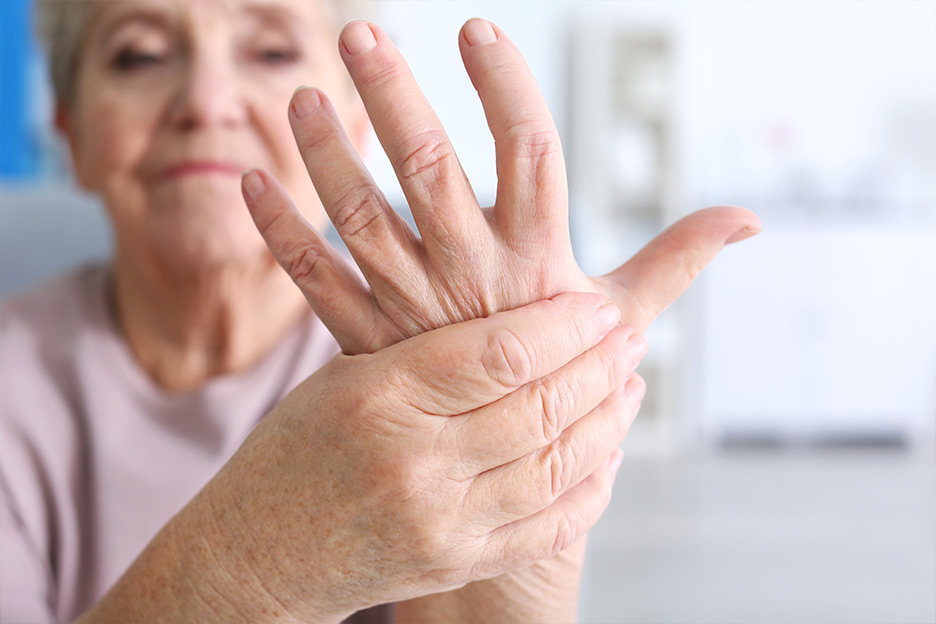Are your joints losing their flexibility and causing you pain? They might be affected by osteoarthritis. How can you recognize osteoarthritis, and what should you do to prevent it from impeding on your day-to-day activities?

What is osteoarthritis?
Osteoarthritis is a disease that targets the joints and is caused by a degradation of the cartilage that covers bone extremities. Cartilage is a naturally soft connective tissue that allows bones to move smoothly. It absorbs the pressure that is applied to the joint. When cartilage is worn, bones can rub against one another, causing pain. The joints that mostly support body weight, such as ankles, knees, hips and spinal cord, are the ones that are most often affected.
Before age 55, both men and women can suffer from osteoarthritis. Past that age, it is mostly women who are affected, especially in their hands, knees, ankles and feet. Men, for their part, are most commonly affected in the hips, wrists and spinal cord. The older a person gets, the higher his or her chances are of getting osteoarthritis; as well, heredity, obesity, previous injuries and lack of exercise can increase the risk of osteoarthritis.
How to recognize osteoarthritis
Osteoarthritis does not affect everyone in the same way. Many patients don’t show any symptoms at the beginning of the disease; these gradually appear as the osteoarthritic condition progresses. Symptoms to watch for are:
- joint pain;
- joint stiffness or difficulty moving;
- occasional swelling of the joint.
The symptoms of osteoarthritis can represent a significant obstacle in the lives of those who suffer from the disease. Indeed, the pain caused by osteoarthritis can limit their day-to-day activities and is one of the main causes of disability in the elderly. If you think you may have osteoarthritis, see your doctor. He or she can provide you with a diagnosis and recommend a treatment plan.
Prevention and treatment
Unfortunately, you can’t do anything to change your age or your heredity, but there are ways to reduce the risk of getting osteoarthritis:
- Maintain a healthy weight. This will decrease the pressure applied to your joints and will also translate into cardiovascular benefits.
- Exercise to strengthen the muscles that support your joints.
- Protect your joints by having good posture, which doesn’t put too much strain on them.
Osteoarthritis cannot be cured, but there are treatments that can reduce joint pain and therefore allow you to keep up with daily activities. Your doctor can prescribe pain medication such as anti-inflammatory drugs or other types of painkillers. Some medications are also available over the counter at the pharmacy. It is important to seek the advice of your pharmacist before purchasing one since they are not for everybody. Physiotherapy can also help relieve the symptoms of osteoarthritis, while various walking aids, such as canes and walkers, can be useful. Finally, the last resort for very advanced cases is surgery; patients are given recommendations as to which type is best suited for them.
Don’t let osteoarthritis keep you from enjoying all the activities you hold dear. Recognize the symptoms as quickly as you can and see your doctor or pharmacist to find treatment solutions that are adapted to your needs.
